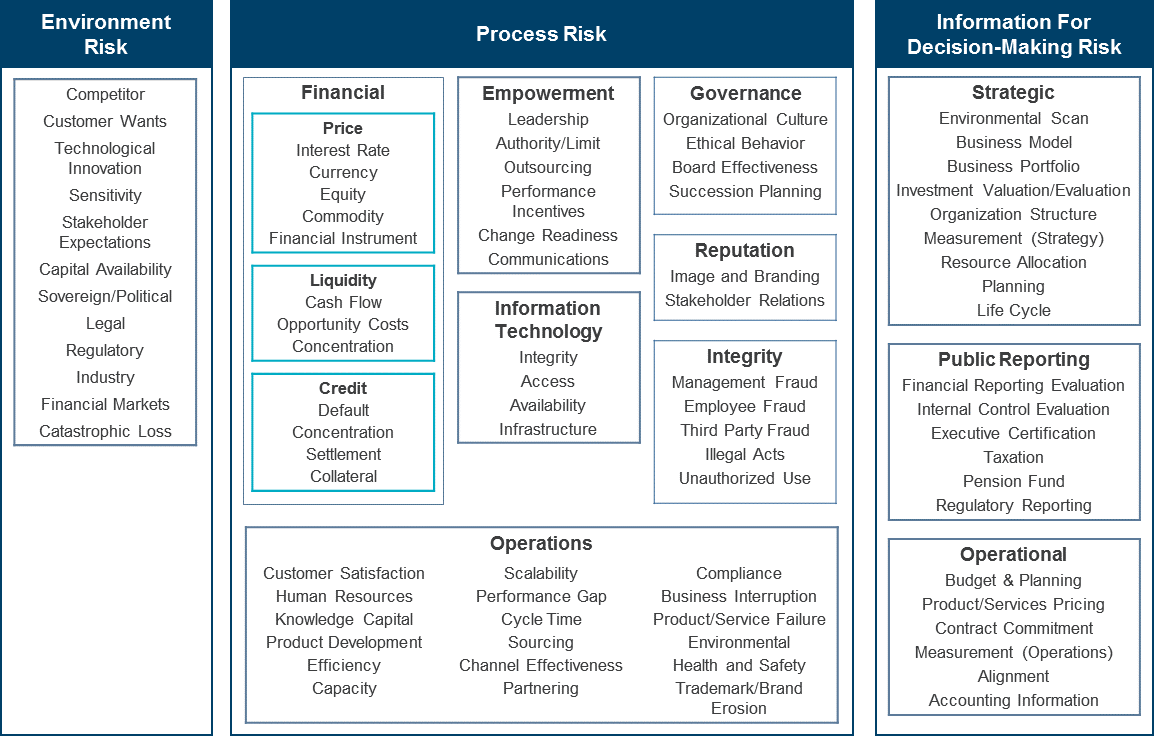“All of the blame and none of the praise”
This was how one Human Resource professional described their job in a forum on tech recruiting recently. Human Resources (HR) can be a bit of a mine field full of potential hazards and risks while searching for that perfect candidate to fill a company’s needs.
Read More
Topics:
Laws & Regulations,
Human Resources,
Risk Assessment,
Strategic Risk,
Performance Management/Measurement
Fraud is the intentional perversion of truth in order to induce another to part with something of value or to surrender a legal right. In the business community, the ultimate goal of fraud is to gain money. There are numerous frauds within the business world.
Read More
Topics:
Fraud,
Ethics,
Risk Assessment,
Strategic Risk,
Performance Management/Measurement,
Customer Satisfaction
What is Organizational Alignment Risk?
Organizational alignment is defined as a conscious and systematic coordination and alignment of three powerful and interrelated driving forces: organizational strategy, organizational culture and organizational infrastructure. Organizational alignment is to be mutually supportive and contribute as efficiently and effectively as possible to meet organizational goals and objectives.
Read More
Topics:
Enterprise Risk Management,
Risk Assessment,
Audit Committee & Board,
Strategic Risk,
Performance Management/Measurement
What Is Process Alignment Risk?
This is the risk that the business processes within a company may not be appropriately aligned with its corporate strategy, resulting in the inability of the organization to meet the demands of its customers efficiently and effectively. Process alignment can be defined as the synchronization of business process objectives and performance measures with organizational objectives and strategies, with a view to avoiding conflicting, uncoordinated activities.
Read More
Topics:
Risk Assessment,
Strategic Risk,
Knowledge Management
Business risk is the level of exposure to uncertainties that the enterprise must understand and effectively manage as it achieves its objectives and creates value. It is not just about threats; there is an upside as well as a downside. Risk is not about a single point estimate—time frame is an important factor when evaluating risk, and exposure and uncertainty are important factors.
Read More
Topics:
Risk Assessment,
Governance, Risk & Compliance,
Strategic Risk
Thorough business continuity plans help organizations minimize the risks of a disaster and restore vital business functions without significant detrimental effects. This blog post examines the fundamentals of business continuity management (BCM) planning and highlights critical lessons learned from various recent disasters, providing actionable steps you can take to create a customized plan.
Read More
Topics:
Risk Assessment,
Governance, Risk & Compliance,
Strategic Risk,
Business Continuity Management,
Self-Assessment,
Performance Management/Measurement









